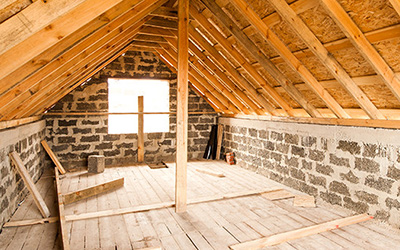Mr. Handyman has been helping homeowners repair, maintain, and enhance their spaces for over 25 years! We are the one-stop solution for everything on your to-do list. This includes answering your questions about home repairs, maintenance, and improvements. Here are answers to some of your most frequently asked questions about marble countertop kitchen services.
How is a marble countertop installed?
Due to the weight and delicate nature of the material, it's highly recommended to hire a professional for marble countertop installation. Professional installers will ensure your new marble countertop is level, secure, and a beautiful addition to your home. Here are typical steps for professional countertop installation services.
- Remove the existing countertop.
- Level the installation area with shims and other methods.
- Install a plywood substrate and secure it to the cabinet frame.
- Install additional supports for overhangs if needed.
- Dry fit the countertops to ensure the measurements are correct.
- Remove the countertop and apply a layer of adhesive to the cabinet frame.
- Place the countertop onto the adhesive and check if it's level.
- Secure the countertop with clamps until the adhesive sets.
- Apply color-match epoxy to the seams.
- Caulk where the countertop meets the wall and cutouts for the sink.
- Seal the marble with a penetrating sealer to protect it from staining.
Do you glue down marble countertops?
Yes. Because natural stone like marble can't be secured with screws, marble countertops are usually glued to the substrate with a high-quality adhesive like silicone. The adhesive must be designed for marble-to-wood applications and resistant to extreme temperatures and moisture.
It's essential that the adhesive is applied evenly and according to the manufacturer's instructions. Thin or thick spots in the adhesive can lead to an uneven marble countertop installation that is not as secure as it should be. Eventually, those new countertops could lift, shift, or crack, creating permanent damage.
Do you need plywood under a marble countertop?
Sometimes, plywood is essential under a marble countertop installation, depending on the marble's thickness and strength. Many contractors use ACX plywood beneath marble counters because of its strength, durability, and cost-effectiveness. Plywood is also easy to cut, so it's ideal for a custom fit at seams and cutouts. Here are examples of when plywood is essential beneath marble.
Thin Marble
The most common thickness for marble countertops is 1.25 inches, which is strong enough to support itself without plywood. Thin marble can be less than half of an inch thick, requiring additional support like plywood.
Thick Marble
While a plywood substrate is typically not needed for thick marble, certain areas may require additional support. Plywood beneath the marble may be necessary around the sink, dishwasher, and other cutouts for adequate support.
How do you secure a marble table top to the base?
To secure a marble table top to a base, you can glue a plywood fixing plate to the underside of the marble, then screw the table base directly into the plywood. The plywood also serves as a substrate that will support the marble and prevent cracking and other damage. Here are the steps service professionals follow to install a marble top to a table base.
- Clean the marble and plywood and apply an even coat of construction adhesive made for wood and stone.
- Clamp the plywood and marble together until the glue has cured.
- Turn the table base upside down and install brackets onto the table legs to secure the base to the plywood.
- Flip the base and position the tabletop.
- Screw the plywood substrate to the brackets.
Why not use marble countertops in a kitchen?
There's no denying that marble is a beautiful stone that can transform a home's decor. However, this natural material isn't as durable or heat-resistant as other popular countertop installation materials like quartz or granite. Marble is less durable because the stone is porous and not as dense as alternatives, so it’s not usually the best choice for kitchen countertops. Marble is susceptible to etching, scratching, and staining, plus it requires more maintenance than most natural stone materials.
Stains
The porous nature of marble makes spills a danger. Food pigments in wine, tomatoes, and other products can quickly create staining.
Etching
Acidic foods like lemons, oranges, and others can dull the finish and cause etching in marble, ruining the finish.
Scratches
Soft stone countertops like marble can be easily scratched by cookware, utensils, and abrasive cleaners. Unlike most other natural stone materials, using a cutting board when preparing food on a marble countertop is essential.
Scorches
Marble isn't heat resistant, making it susceptible to discoloration, burn marks, and thermal shock, which can cause permanent damage. When cooking near marble, always use trivets or pot holders beneath hot cookware.
Maintenance
Cutting boards, placemats, and coasters are a must for keeping marble countertops looking new. Spills must be cleaned up immediately to prevent staining. Marble also requires resealing, sometimes every three to six months depending on usage.
 Click to call
Click to call


 Click to call
Click to call
